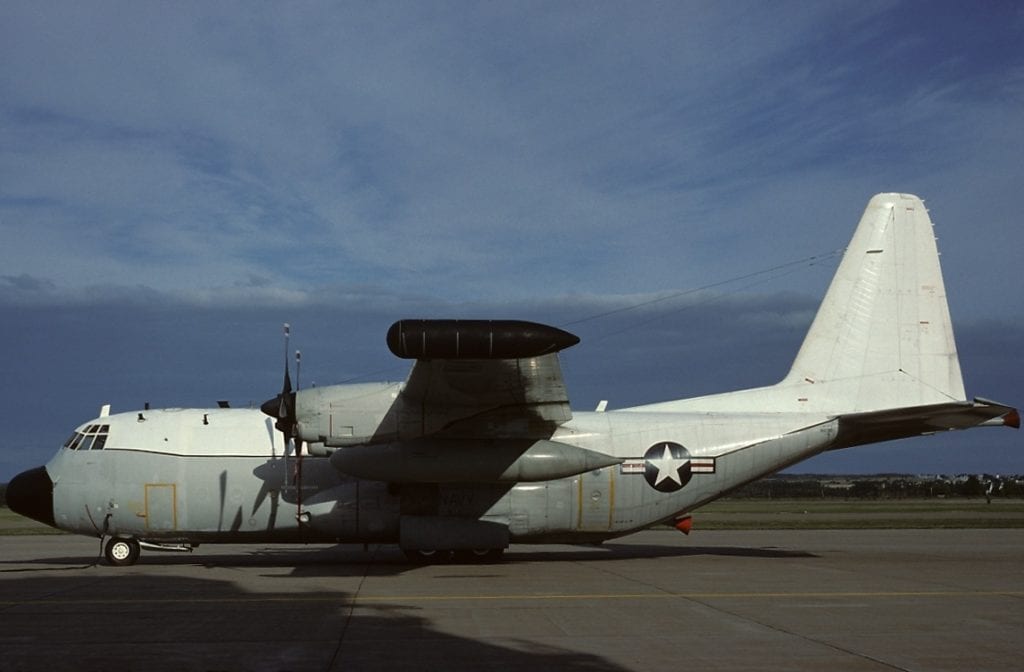
ARLINGTON, Va. — The admiral in charge of the nation’s strategic nuclear deterrent forces has praised the Navy’s decision to acquire the C-130J-30 Super Hercules aircraft as a platform for communicating with its deployed ballistic-missile submarine force. Four decades ago, the Navy was using earlier C-130 versions — built by Lockheed — for the same mission.
“The Navy is fully capable of supporting my mission requirements to ensure survivable communications to the ballistic-missile submarines and I think they’re making a great decision to go to the C-130,” said Adm. Charles Richard, commander, U.S. Strategic Command, speaking in a Jan. 5 webinar to the Defense Writers Group, in response to a reporter’s question.
The communications role is called TACAMO by the Navy — a term meaning “Take Charge and Move Out” — has been performed for three decades by the service’s Boeing E-6 Mercury aircraft, a variant of the Boeing 707 airliner. After the Cold War, the Airborne National Command Post role previously performed by Air Force EC-135 “Looking Glass” aircraft was incorporated into the E-6 with the installation of the Airborne Launch Control System (ALCS), combining the TACAMO and ALCS in one platform.
The Navy has performed the TACMO mission since 1963, beginning with four C-130G (later EC-130G) Hercules aircraft, later augmented by eight newer EC-130Q Hercules. The E-6 replaced the EC-130s, giving the two TACAMO squadrons, VQ-3 and VQ-4, a faster, quieter, more comfortable platform for the long missions.
The TACAMO aircraft are equipped with a long trailing wire antenna used to relay very-low-frequency radio messages to submerged ballistic-missile submarines. The airframes go through considerable stress as they maintain high angle of bank for long periods to maintain tight orbits to wind the trailing-wire antenna into a vertical position, needed for the radio waves to penetrate the water most effectively.
The Request for Information issued on Dec. 18 by the Naval Air Systems Command’s TACAMO Program Office (PMA-271) announced that the Navy “intends to negotiate and award sole-source contracts to Lockheed Martin Corporation, Marietta, [Georgia], for the efforts associated with the procurement of up to three C-130J-30 “Stretch” green airframes in [fiscal 2022/2023] for testing and analysis.
The C-130J is the current, much more modern version of the C-130 and is flown by the Air Force, Marine Corps and Coast Guard, as well as many foreign air forces. The C-130J-30 is similar but has a 15-foot-longer fuselage. The rugged C-130J is able to operate from many more airfields than the current E-6B Mercury.
“Lockheed Martin Corporation is the sole designer, developer, and manufacturer of the C-130J-30 and is the only source capable of producing the C-130J and derivative aircraft and providing support equipment, logistics support, defensive systems services, and engineering services,” the Navy’s announcement said. “The Analysis of Alternatives results indicated that the four-engine, militarized C-130J-30 is optimally configured aircraft for performing the TACAMO mission. The characteristics of this airframe also maximize the operational deployability of the assets to austere environments. The C-130 is currently extensively fielded within the Department of Defense, and deployed at various bases that create operation, training and logistics support synergies for TACAMO execution. Lockheed Martin already has an established domestic production line that has the ability to produce test units for PMA271 that will enable acceleration of the risk reduction and subsequent engineering and manufacturing development test program.”
- SECNAV Advocates Increased Legal Immigration to Increase Shipbuilder Workforce - April 23, 2024
- Insitu Going Strong at 30, Focusing on Maritime Operations - April 8, 2024
- Navy Awards Boeing Additional Funds for MQ-25 Drones for Testing - April 3, 2024






